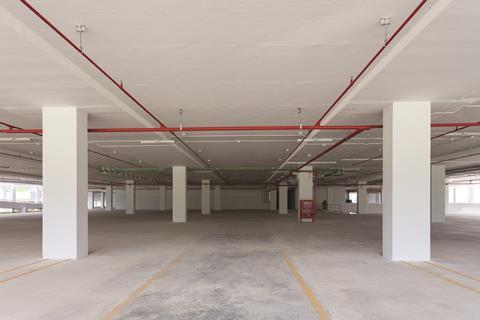As everything in life continues to speed up, there is more and more demand from online customers to receive goods faster. From a logistics point of view, this means that retailers need to think beyond the traditional out-of-town warehousing of goods and start focusing more on delivery services in the city sphere, to meet time-sensitive targets and nail the all-important ‘last mile’.

Crucial to this is identifying what vacant space is available in our city centres and which obstacles need to be overcome to unlock further potential sites. Large-scale, under-utilised car parks and office basements would be obvious examples, as would vacant retail units.
Multi-storey warehousing in city centres is increasingly emerging as a viable option, with Singapore, Paris, Hong Kong and Munich all starting to build up. In London, Gazeley is speculatively developing its three-storey London Logistics Hub at Peruvian Wharf, where 426,000 sq ft of space will be built by 2019, attracting rents of up to £20/sq ft.
That is not to say that there are not obstacles to delivering ‘last-mile’ sites through multi-tenancy and multi-storey sites. For a start, land in a city such as London is scarce and expensive.

Next, multi-tenancy sites are often close to residential developments and so throw up management issues regarding hours of operation, while planners prefer to keep logistics out of town.
Logistics warehouses aren’t associated with big sheds anymore – they are places where people aspire to live
It is important that we innovate and think outside the box to not only facilitate last-mile delivery, but also to allow the real estate industry to respond to consumer behaviour, such as demand for seamless returns.
Today, on average, 50% of goods are being returned, so retailers are investing in a lot of research into how this trend will evolve and what is required to accommodate the growing number of returns, with many opting to operate separate facilities to deal with them.
Developers in other cities, such as Frankfurt and Luxembourg, have already begun to tackle these challenges in new ways, successfully combining logistics, offices, car parking and residential. As a knock-on effect, logistics warehouses aren’t associated with big sheds anymore – they are places where people aspire to live.

A concept like this seems out of the question here, but if we straw-polled residents in the UK – particularly younger residents – and asked who would want to live in an integrated space that combines residential, retail and employment space, we may find some interesting results.
The benefits of multi-urban centres are clear – they will enable people to receive goods ordered online within the hour and are an innovative solution to opening up new sites for housing delivery.
With so much demand on online retailers to deliver at increased speed – something that we, as consumers, created – those in the retail and logistics sectors must respond and continue to think outside the box, constantly revising their strategies in order to satisfy ever-changing customer demand.
Industrial and logistics: investors and occupiers continue to pile in
- 1
- 2
- 3
- 4
- 5
- 6
- 7
- 8
 Currently reading
Currently readingRapid change calls for greater innovation
- 9
- 10
- 11
- 12
- 13
- 14










































No comments yet